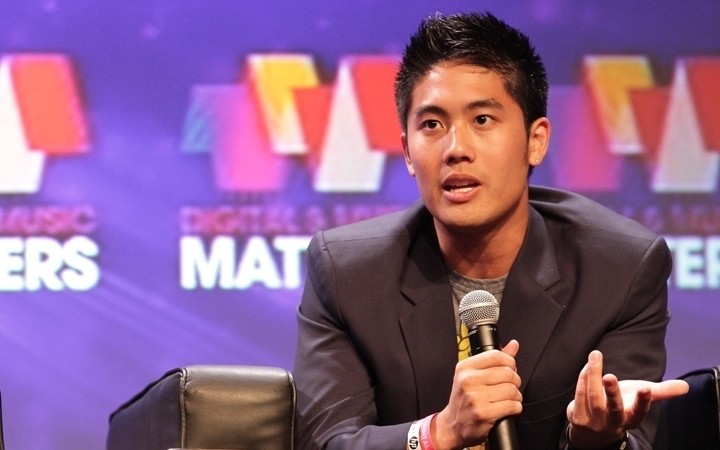
With more than nine million people following his channel on YouTube, 23-year-old Ryan Higa has emerged as one of the platform’s biggest breakout stars.
For Higa and content makers like him, the video site is redefining stardom for a new generation immersed in social media.
“Talking to the camera gives the audience a feeling of being more a friend than a fan,” Higa proposed, speaking in Singapore at the 2013 Digital Matters conference.
“I think that’s a lot more powerful.”
YouTube provides aspiring stars with an on-demand and niche environment, where intimacy and interactivity are often integral to success
These budding creators however are overshadowed by the wide reach as well as ensuing fortunes of established celebrities, and they are still working out how best to sustain their newfound fame, while making money at the same time.
At Digital Matters, Higa and his fellow panelists made the case for a digital alternative to traditional star power.
Self-nurtured fanbases are more likely to respond and engage than those powered by well-oiled publicity machines, remarked Chester See, a former Disney Channel host who now uses YouTube to drive his career development.
“You can see it, based on the retweets and the fans disseminating that information,” he said.
“Because of that engagement, there’s a lot more influence you should attach to online stars.”
Ongoing engagement helps build trust, and that should give extra credibility to brand endorsements, Higa added.
“The power behind YouTubers, people who are personable with their fans, is underestimated.”
Traditional broadcasters meanwhile are inclined to switch off viewer ratings and comments to block out negative reviews, a no-no in a world where people have more viewing choices than ever, suggested Rob Nixon, an Australian chef behind YouTube channel Nicko’s Kitchen.
Unlike TV, YouTube is a two-way street, Nixon stressed, speaking on the same panel.
“At the end of the day they are the same people, except we are talking to them,” he said.
YouTube itself meanwhile is actively pushing its credentials as an alternative to linear TV. Building on its enormous collection of user-generated video, the site followed its YouTube Partner Program, a toolset to help people monetize their own content, with a more concerted funding program called Original Channels, providing upfront payments and loans to creators with particular promise.
Already in its second round in the US, where around 40% of the first wave of recipients secured additional funds from YouTube (a track record that compares favorably with concept development in TV), the initiative has since rolled out to Europe and more recently to Japan.
Other large internet markets where YouTube is building momentum, such as India and Korea in Asia, could be next.
“These investments are meant to be catalysts to get creators to think differently, to supercharge the creation process,” said the site’s APAC head Adam Smith, speaking at a media roundtable in Hong Kong.
At the same time, a third dedicated studio for YouTubers opened in Tokyo this year, on the heels of similar ventures in Los Angeles and London, offering editing and recording equipment while serving as a venue for collaboration and training.
The studios are all slightly different, Smith said, as YouTube experiments with a range of approaches.
“We’re trying to figure out the best way we can help, to be a catalyst for more creation and community,” he explained.
The panelists at Digital Matters meanwhile, who have embraced their newfound fame as a full-time occupation, now need to manage the growth of their fanbases while preserving the close bonds at the base of their appeal.
Monetization and ongoing promotion are prominent challenges, as more amateur and professional players compete for user time and loyalty.
The revenue side remains problematic, with display ad rates low and YouTube taking a reported 45% share, prompting some creators to seek ancillary revenues elsewhere.
These tend to be from e-commerce platforms such as iTunes, or via direct content tie-ups with advertisers.
These options can be more lucrative than income derived from YouTube, though See feels onsite ad revenues will become more meaningful, as long as successful YouTube stars can maintain their momentum.“
Once these views start adding up it’s going to be a very lucrative business,” said See, along with Higa one of the backers behind Yomyomf, a pop culture channel that has received YouTube funding.
“Then we can start saying now there is an ROI, we can start funding projects and sustain something,” See added.
“That’s the exciting part.”

As a leading independent consulting and research provider focused on Asia media & telecoms, MPA offers a range of customized services to help drive business development, strategy & planning, M&A, new products & services and research. Based in Hong Kong, Singapore and India, MPA teams offer in-depth research reports across key industry sectors, customized consulting services, industry events to spread knowledge and unlock partnerships, and publications that provide insights into media & telecoms.
All Media Partners Asia articles >Thank you for submission
Once you activate the account, your subscription entitles to receive 3 months of complimentary access to ‘The Digest’, MPA’s monthly email analysis,updates across TMT with exclusive industry interviews and data.